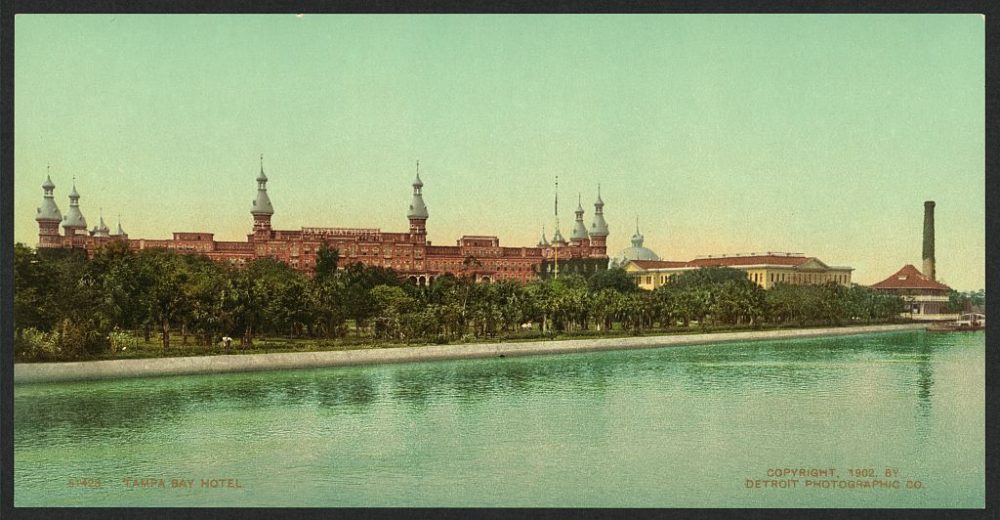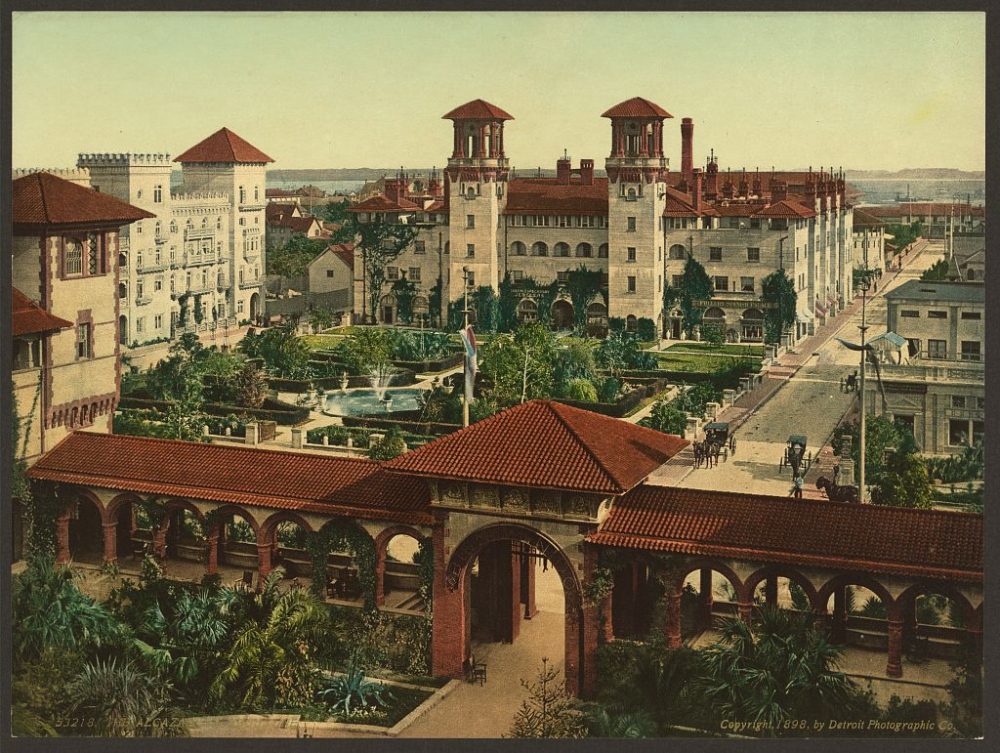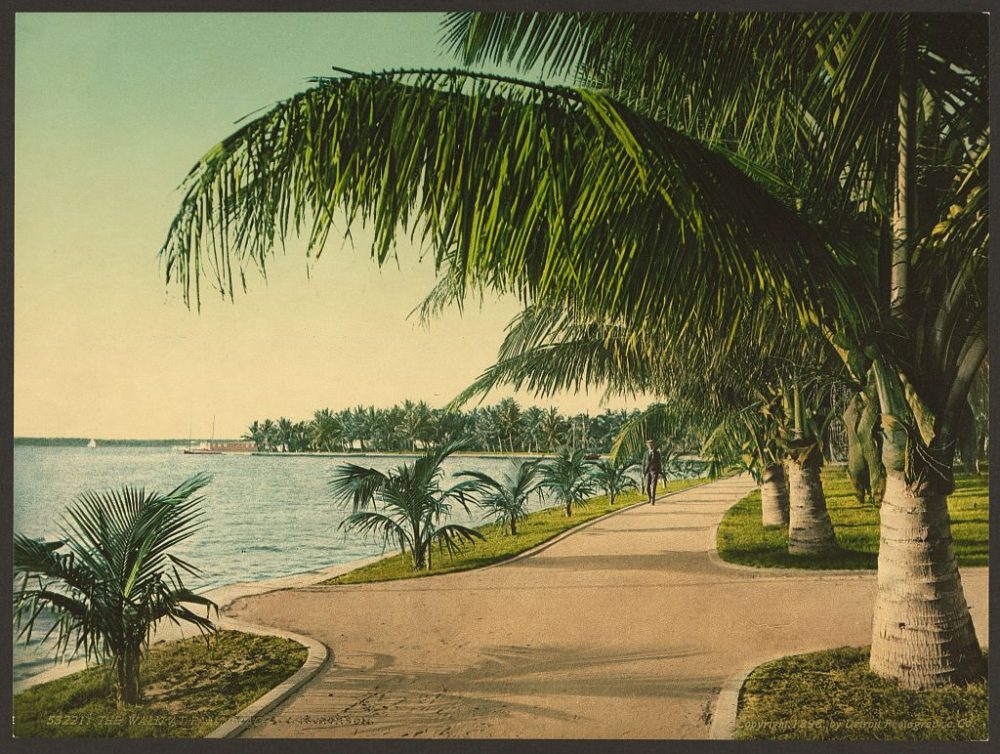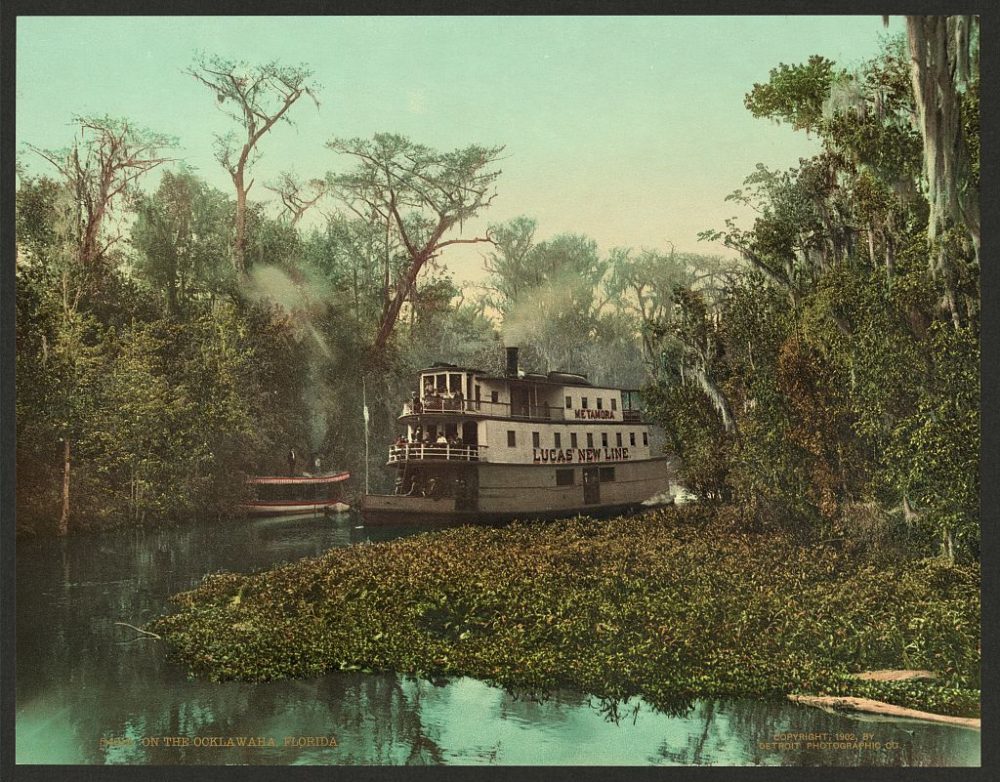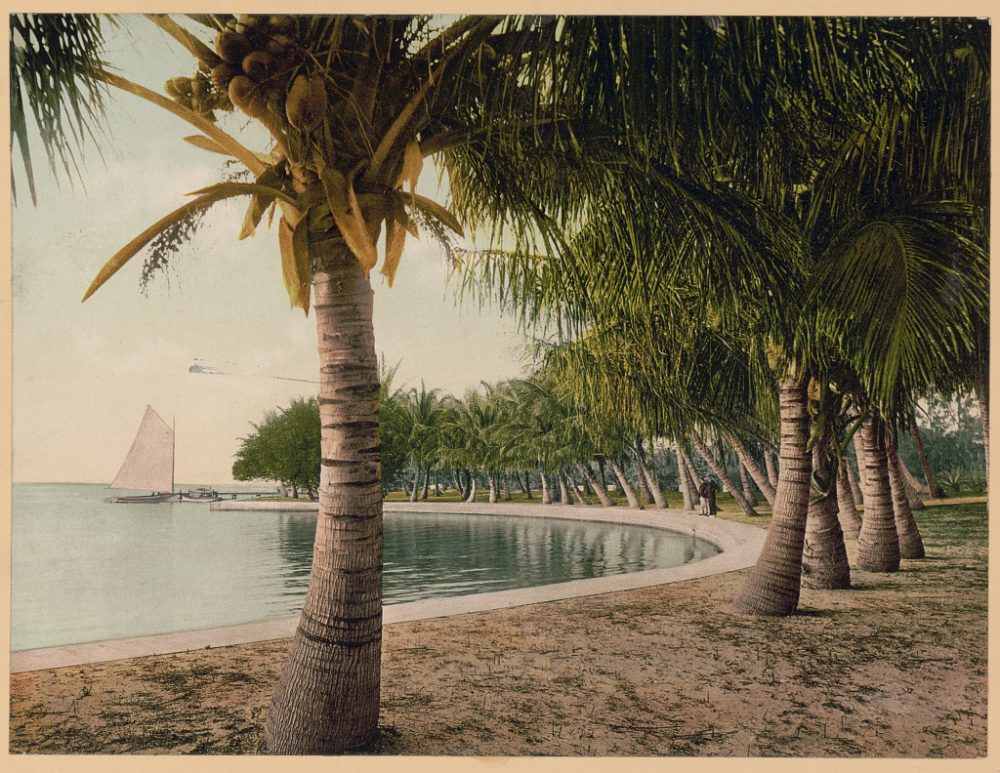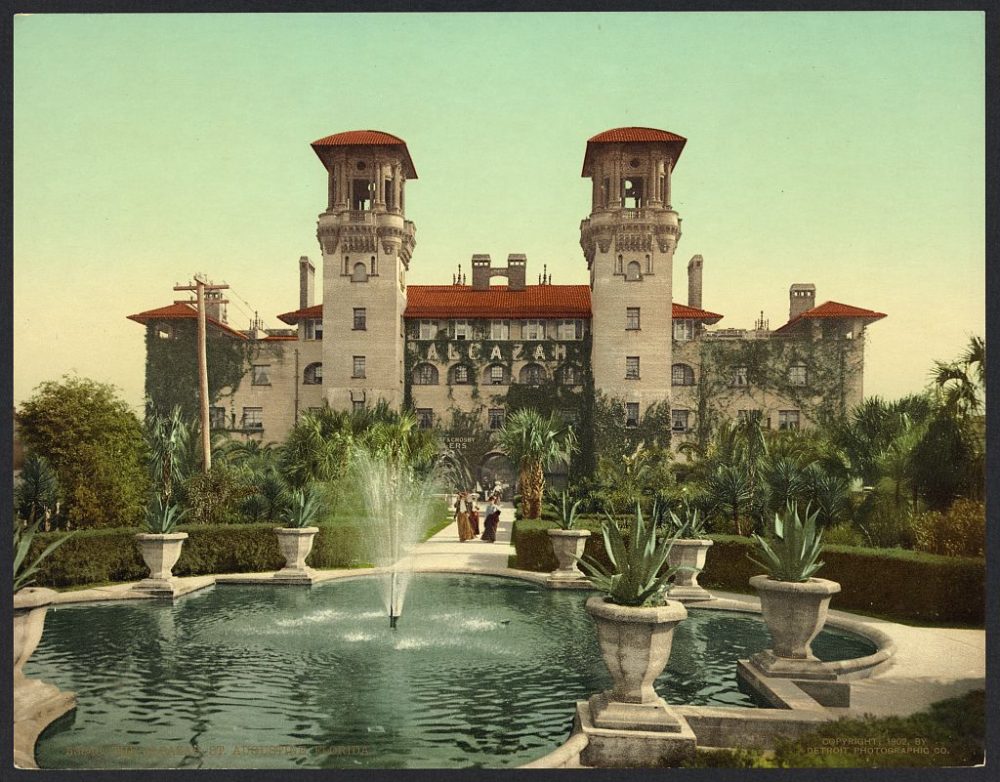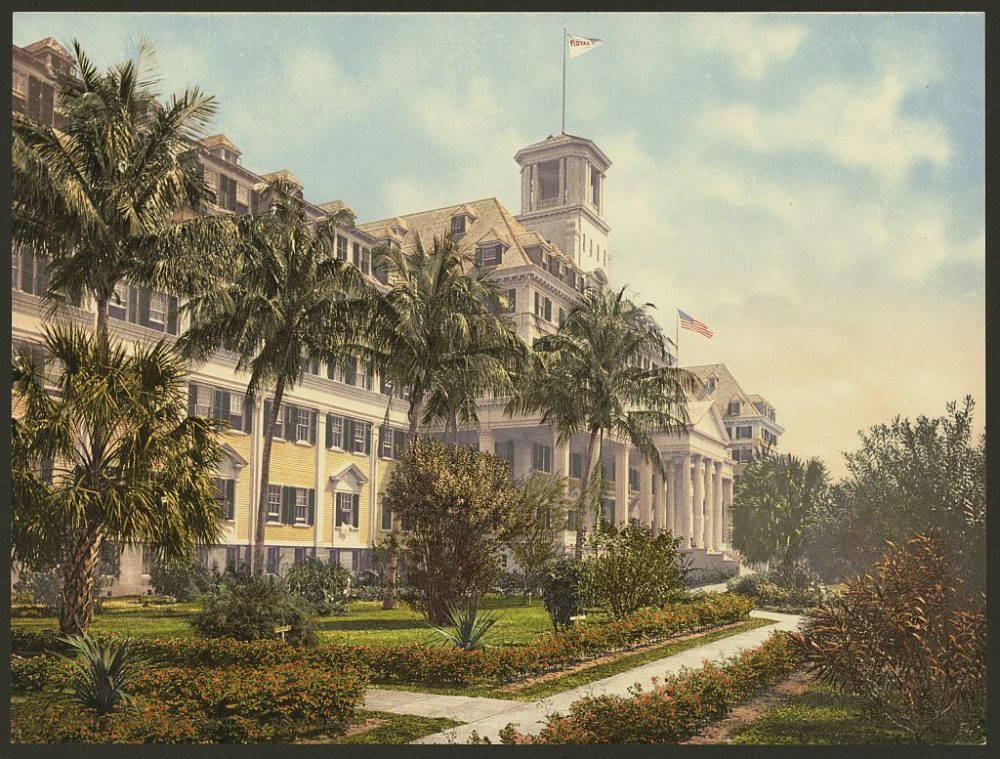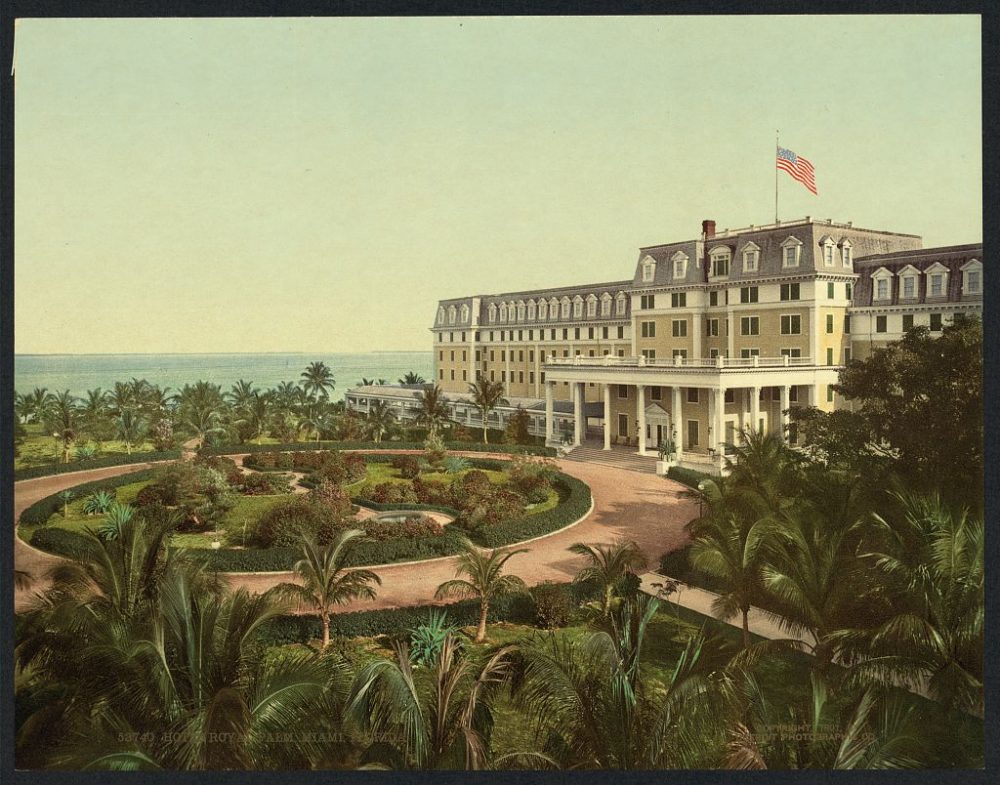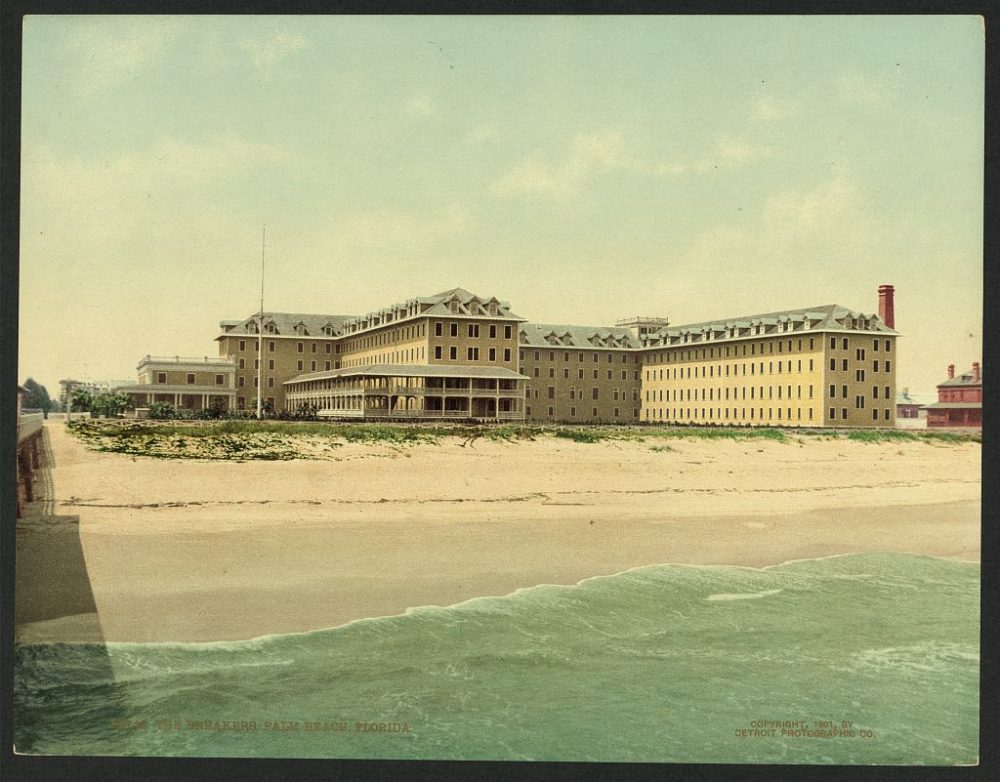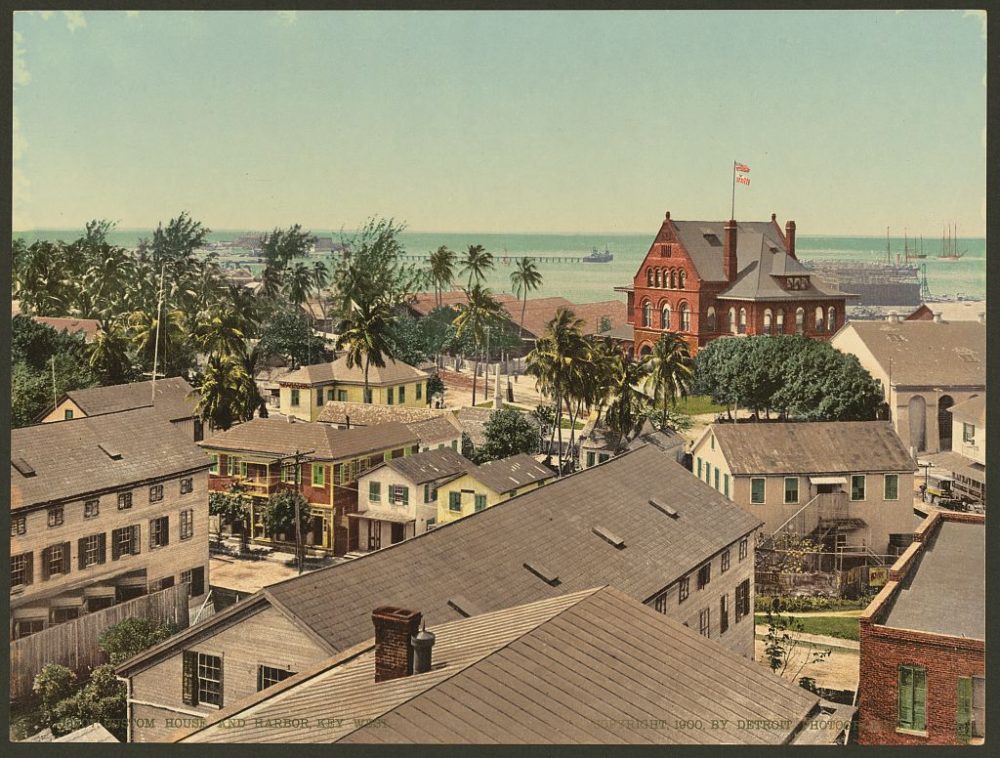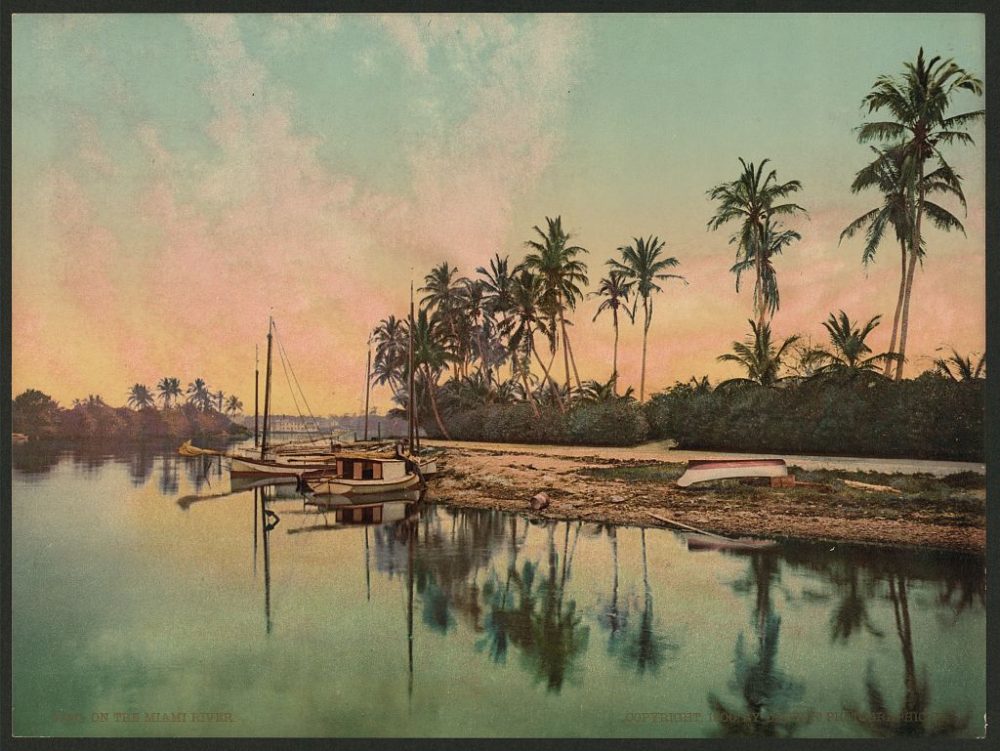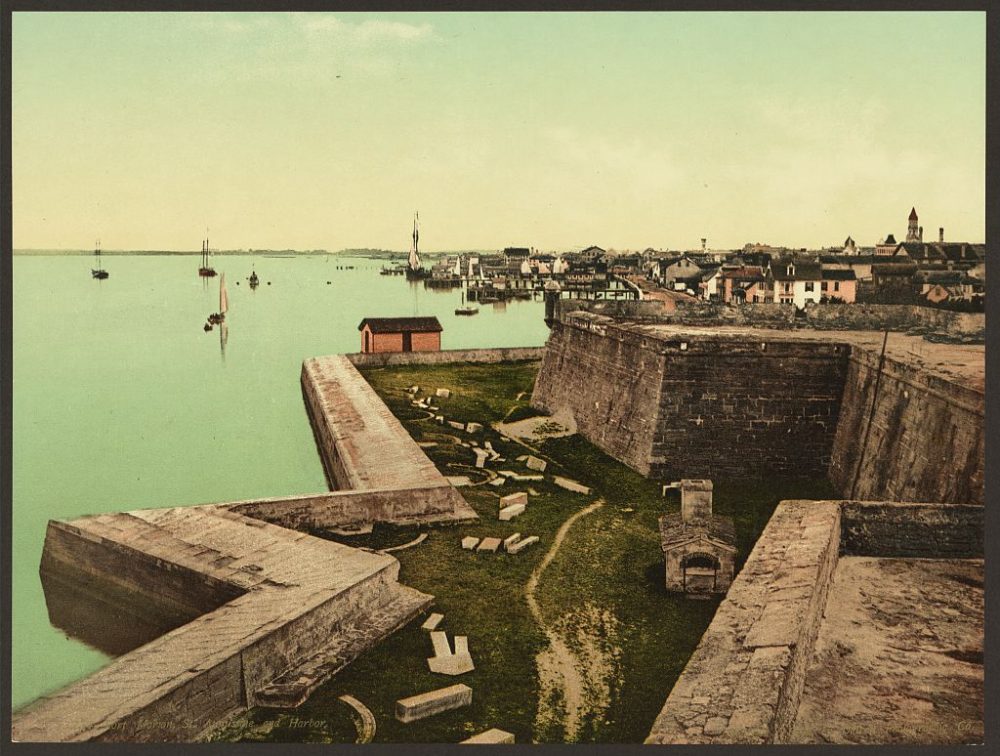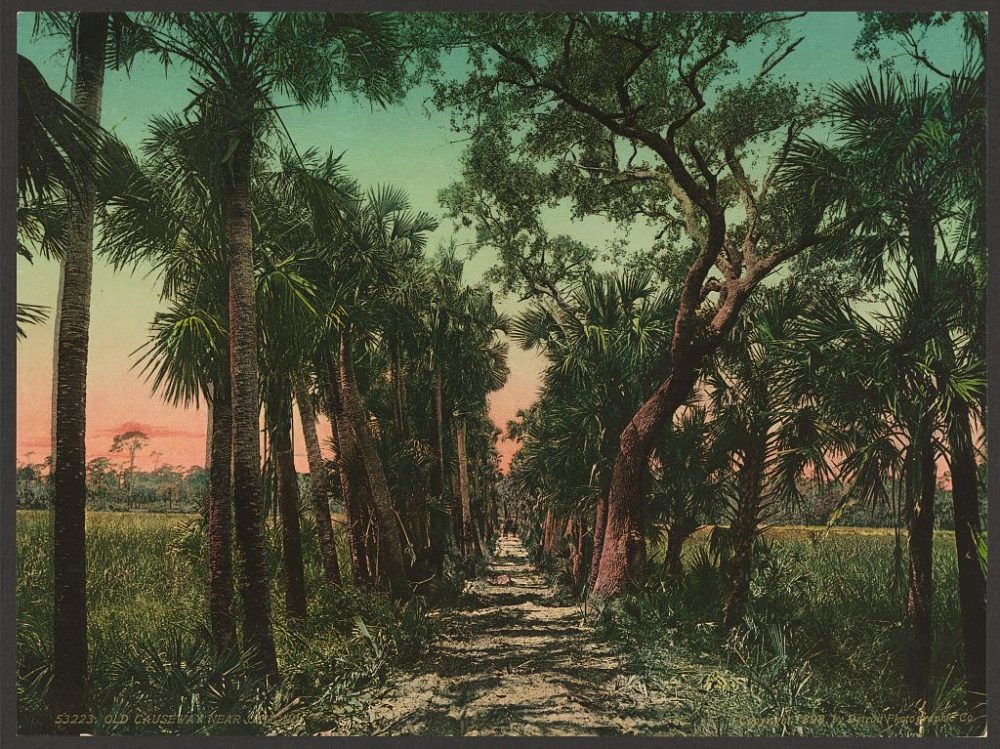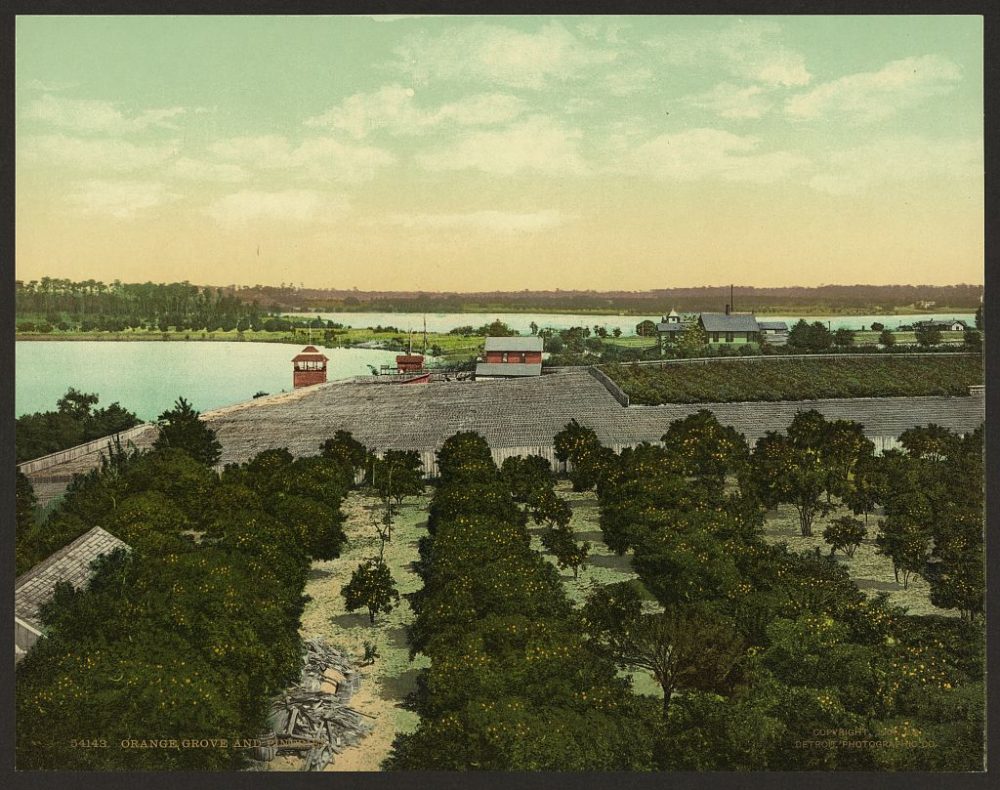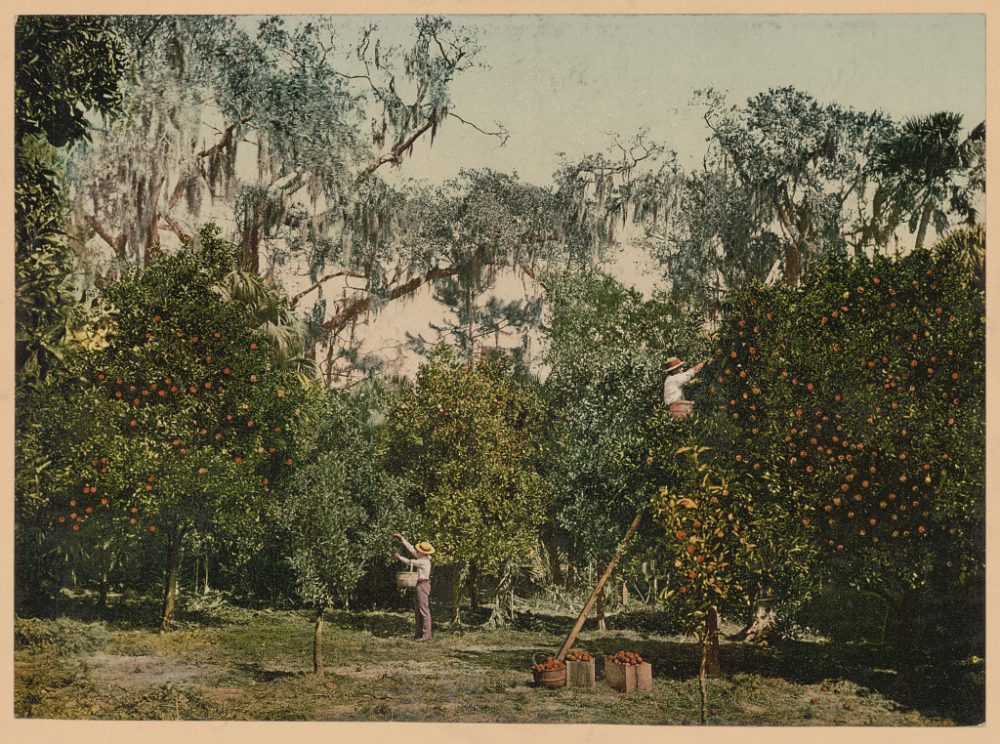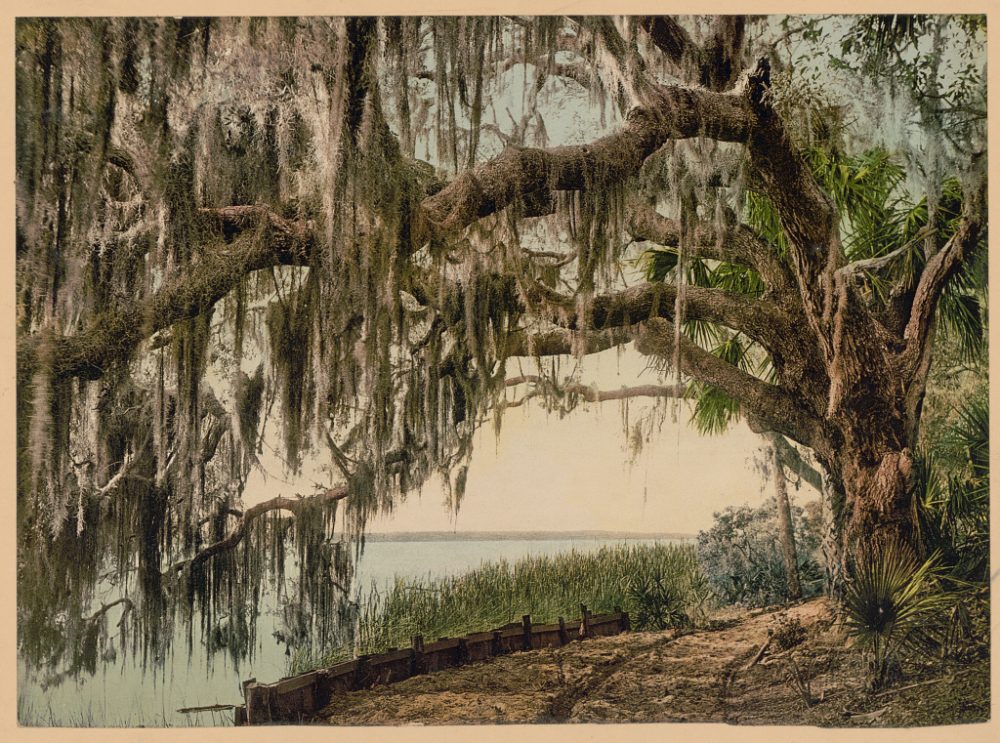17 février 2020 Auteure : Marie-Lyse Paquin
Voyage en Floride vers 1900
Le territoire de l’actuelle Floride fut d’abord colonisé par l’Espagne, puis conquis par la Grande-Bretagne de 1763 à 1783, retourné brièvement à l’Espagne avant de devenir un État américain en 1845. Toutes ces influences se retrouvent dans l’architecture et le métissage de la population. Depuis les années 1930, un grand nombre de Québécois s’y sont installés à l’année ou pour y passer l’hiver.
1- Hôtel de Tampa Bay, Floride, 1902
Bibliothèque du Congrès américain 2- La cour de Ponce De Leon, 1898
Bibliothèque du Congrès américain 3- La cour de Ponce De Leon, 1898
Bibliothèque du Congrès américain 4- Palm Beach, 1898
Bibliothèque du Congrès américain 5- Sur le Ocklawaha, 1902
Bibliothèque du Congrès américain 6- Palmiers de coco, Lake Worth, 1898
Bibliothèque du Congrès américain 7- L’Alcazar, St. Augustine, 1902
Bibliothèque du Congrès américain 8- Royal Poinciana, Palm Beach, 1900
Bibliothèque du Congrès américain 9- Indian River, Florida, 1898
Bibliothèque du Congrès américain 10- Hotel Royal Palm, Miami, 1901
Bibliothèque du Congrès américain 11- The Breakers, Palm Beach, 1901
Bibliothèque du Congrès américain 12- Maison des douanes et port, Key West, 1900
Bibliothèque du Congrès américain 13- Sur la rivière Miami, 1900
Bibliothèque du Congrès américain 14- Hévéa à Key West, 1900
Bibliothèque du Congrès américain 15- Old City Gate, Ste Augustine, 1898
Bibliothèque du Congrès américain 16- Fort Marion, Ste. Augustine, 1898
Bibliothèque du Congrès américain 17- Rice Creek, 1900
Bibliothèque du Congrès américain 18- Royal Ponciana, Lake Worth, 1898
Bibliothèque du Congrès américain 19- Chemin près d’Ormond, 1898
Bibliothèque du Congrès américain 20- Orangeraies et vignobles, 1904
Bibliothèque du Congrès américain 21- Orangerais sur l’Indian river, 1904
Bibliothèque du Congrès américain 22- Royal Arch Oak, Ormand, 1898
Bibliothèque du Congrès américain À voir dans la même collection :
